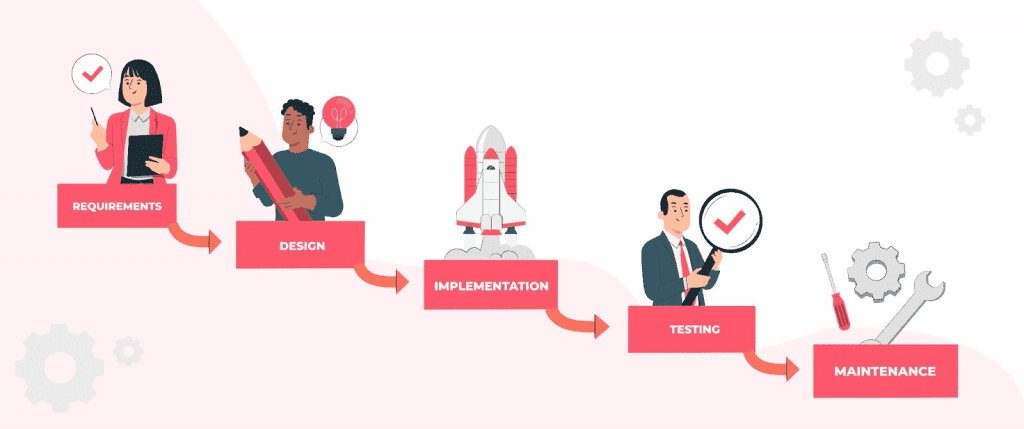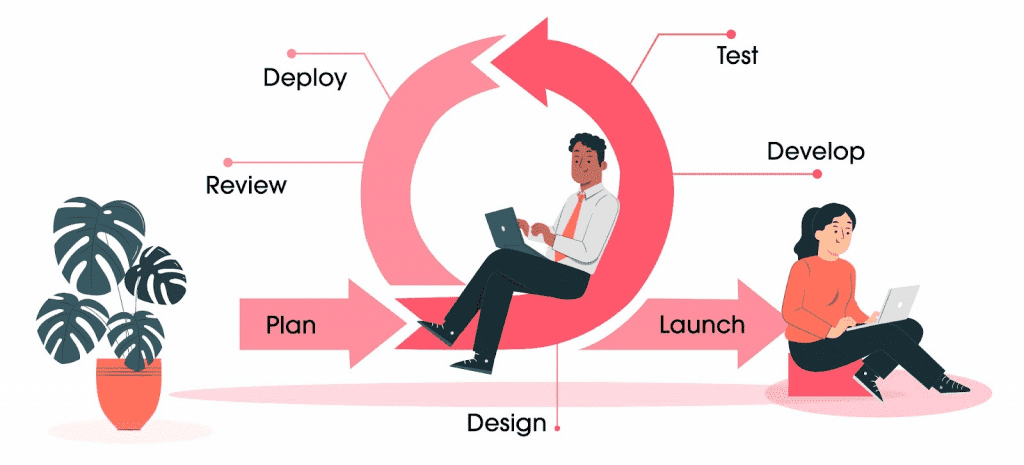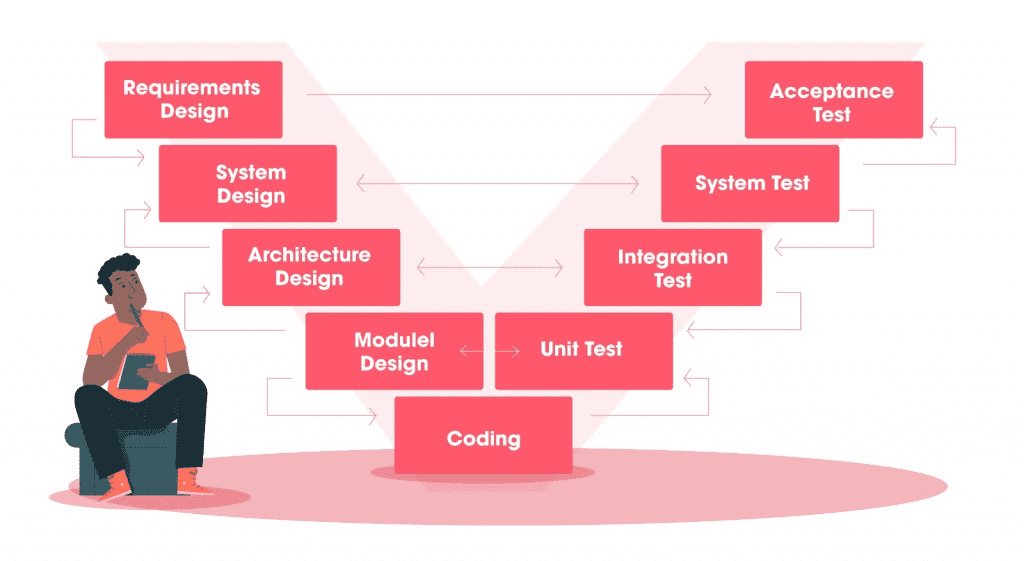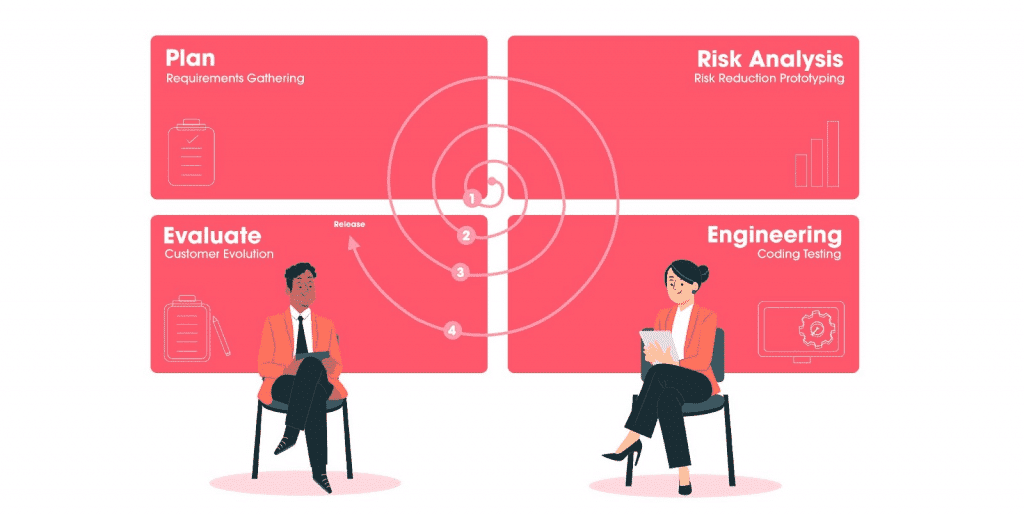As we know that the world of technology is rapidly evolving, the importance of the quality of software applications has also increased. Software quality assurance plays an important part in making sure that the functionality and usability of the application are according to the users demands.
In this guide, we will try to understand the basic concepts of what testing is, the importance of testing in software development, different types of software testing, methodologies related to software testing, and best practices to follow in software development.
Understanding Testing in Software Development
What is Testing?
Testing in software development is an approach to evaluate a software application. This helps us identify the following in a system, such as:
- Defects
- Errors
- Difference between expected and actual results
These defects and errors are found by executing test cases and analyzing the results. These results are then managed in a status report, which is later shared with stakeholders to get their feedback. Through testing, testers can make sure that the software meets the requirements of the users.
Importance of Testing
To make sure the software application is working as intended, testing is very essential. Here are some of the reasons why, such as:
Bug Detection and Prevention
The time and cost spent on an application can be drastically reduced if issues are detected early. This can be achieved through early testing. Testing helps identify bugs and defects early in the software development lifecycle.
Enhanced User Experience
A user would only use an application for longer periods if it was user friendly. To make sure the user gets a seamless user experience, we use software testing. By identifying and addressing usability issues, software can be optimized for efficient functionality.
Customer Satisfaction and Trust
High quality software leads to increased customer satisfaction and builds trust among users. By delivering reliable and bug-free software, organizations can establish a positive reputation in the market.
Risk Mitigation
As the number of applications has increased, so has the data on them. This makes the user’s data vulnerable. By conducting early testing in the development phase, we can implement appropriate security measures to prevent this from happening. This helps us in:
- Software failures
- Security breaches
- Data loss
Interoperability and Integration
What is the purpose of the software application if it is not compatible with different devices and operating systems? To make sure this does not happen, it is important to test an application in different environments.
Exploring Different Testing Methodologies
What is Testing Methodology
In an agile testing environment, testing methodology is a systematic approach or process used to make sure the efficiency and effectiveness of testing processes during the development phase by:
- Planning
- Designing
- Executing
- Managing test
To streamline your testing phase and keep information in one place, it is important to use a test management tool or a project management tool.
Exploring Different Testing Methodologies
Let’s discuss some of the most widely used testing methodologies, each with its own approach and benefits. Here are the following:
Waterfall Methodology
This methodology follows a sequential approach to software development and testing. It consists of different phases, such as:
- Requirements gathering
- Design
- Development
- Testing
- Deployment

Agile Methodology
Unlike the waterfall model, Agile methodology focuses on the following:
- Flexibility
- Collaboration
- Iterative development
Testing in Agile is an ongoing process that runs parallel to development activities. It involves breaking down the software into smaller portions called sprints. In this process, we follow agile principles and testing metrics, which help us achieve a software product of high quality. The most common agile methodologies are:
- Scrum
- Kanban
- Extreme programming (XP)
- Lean software development

V-Model Methodology
The V-Model methodology is an extension of the waterfall model, emphasizing the relationship between development and testing phases. It follows a structured approach where testing activities are aligned with corresponding development stages. The left side of the “V” represents the requirements and design phases, while the right side represents the testing and verification phases.

Spiral Methodology
The spiral methodology combines elements of the waterfall model and iterative development. It involves a series of iterations, where each iteration goes through four main phases:
- Planning
- Risk analysis
- Development
- Evaluation
The spiral model allows for the incorporation of user feedback and continuous improvement throughout the development and testing cycles.

Different Types of Software Testing
There are various types of software testing, each serving a specific purpose. Let’s explore some commonly used testing types:
Functional Testing
Functional testing focuses on validating and verifying the software’s functionality against its requirements. This type of testing uses different types of testing techniques, such as:
- Unit testing
- Integration testing
- System testing
- Acceptance testing
Performance Testing
Performance testing evaluates the software’s responsiveness, scalability, stability, and resource usage under varying workload conditions. It helps identify performance bottlenecks, assess system capacity, and ensure optimal software performance.
Security Testing
The primary goal of security testing is to identify weaknesses in the software’s security. It involves assessing the software for potential threats, such as:
- Unauthorized access
- Data breaches
- Confidentiality breaches
Usability Testing
With the help of usability testing, we can assess the software’s ease of use and user friendliness. This is done by gathering feedback from the users to identify any usability issues and enhance the overall usability of the software.
Regression Testing
When new functionality is added to a system, we have to make sure that it is working fine and has not impacted the existing functionality. This is where regression testing comes in. It involves retesting previously tested components to verify their continued proper functioning.
Best Practices in Testing Methodologies
To maximize the effectiveness of testing methodologies, it’s essential to follow these best practices:
Test Planning
In the planning phase, testers make a comprehensive testing plan. This plan consists of the following:
- Objectives
- Scope
- Testing approach
Test Case Design
Testers write test cases that cover all relevant scenarios. These test cases have to be clear, short, and precise so they are easily understandable by managers and stakeholders.
Test Execution
After the test cases are designed by the testers, they are executed one by one, systematically. Their result is then recorded in a test report and shared with the stakeholders.
Test Documentation
In an agile testing environment, it is advised to maintain detailed documentation of test cases, test results, and any identified defects.
Continuous Improvement
As the requirements of the users are changing frequently, it is important to regularly evaluate the test cases and the testing process to make sure a high quality software product is released.
Putting It All Together
Testing methodologies are essential for ensuring the quality, reliability, and performance of software applications. By understanding the fundamentals of testing, exploring various methodologies, and selecting the right approach, organizations can enhance their software development processes and deliver high quality products.
Utilizing different types of software testing, such as functional, performance, usability, and regression testing, further strengthens the software overall. By implementing best practices and continuously improving testing processes, organizations can optimize their testing efforts and meet user expectations in today’s competitive digital landscape.















































